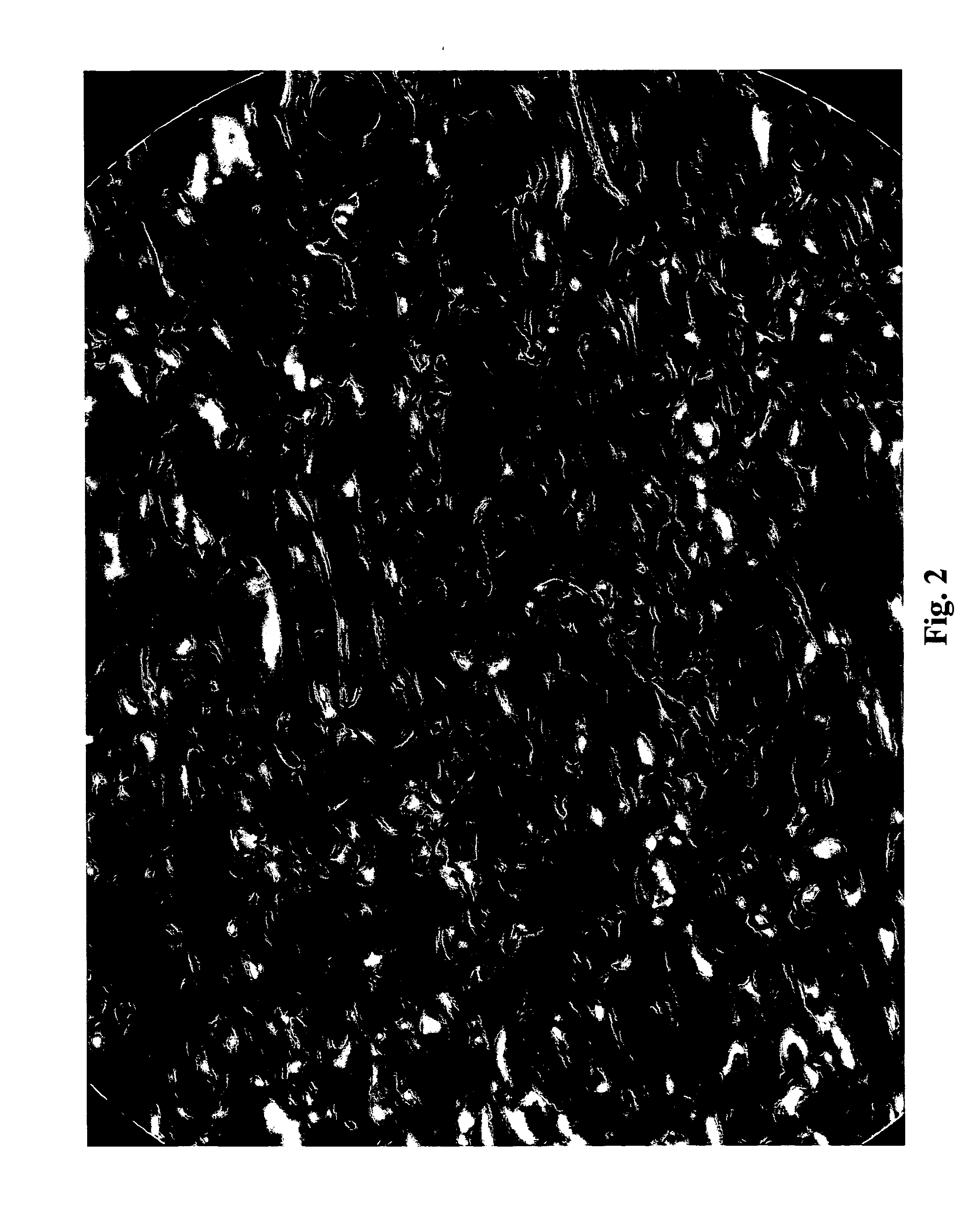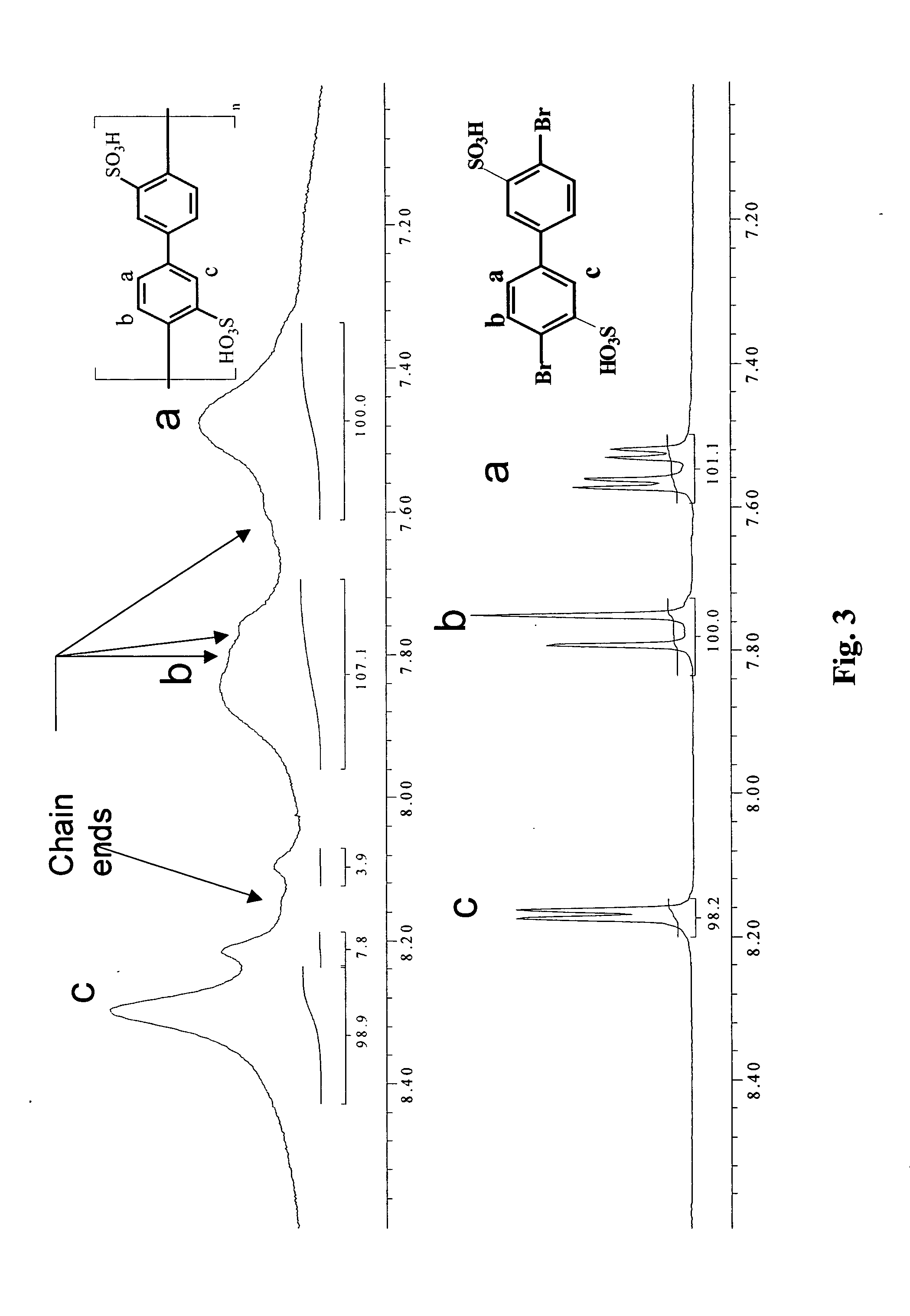Liquid crystal poly(phenylene sulfonic acids)
a liquid crystal polymer and phenylene sulfonic acid technology, applied in the field of polymer materials, can solve the problems of poor conductivity of nafion at low relative, high osmotic drag of nafion, and inability to be easily used
- Summary
- Abstract
- Description
- Claims
- Application Information
AI Technical Summary
Benefits of technology
Problems solved by technology
Method used
Image
Examples
examples
Design and Optimization of the Polymerization Approach
[0126] The 4,4′-dihalo-3,3′-biphenyldisulfonic acids and 4,4′-dihalo-2,2′-biphenyldisuflonic acids were each polymerized using an Ullmann coupling reaction to determine the reaction conditions which optimized the molecular weight for the respective polymers. Specifically, the sulfonic acids of 4,4′-dibromo-3,3′-biphenyldisulfonic acid and 4,4′-diiodo-2,2′-biphenyldisulfonic acids were each protected with various protective groups and polymerized in dry NMP within a nitrogen atmosphere, using copper mediated coupling, at 140° C. (i.e., an Ullman coupling reaction). The intrinsic viscosities of the polymers were measured and compared. As discussed previously, the intrinsic viscosity of the resulting polymer is indicative of its molecular weight. That is, the higher the intrinsic viscosity, the higher the molecular weight. A comprehensive discussion of intrinsic viscosity and its measurement and calculation is provided in the Poly...
PUM
| Property | Measurement | Unit |
|---|---|---|
| conductivity | aaaaa | aaaaa |
| temperatures | aaaaa | aaaaa |
| temperatures | aaaaa | aaaaa |
Abstract
Description
Claims
Application Information
 Login to View More
Login to View More - R&D
- Intellectual Property
- Life Sciences
- Materials
- Tech Scout
- Unparalleled Data Quality
- Higher Quality Content
- 60% Fewer Hallucinations
Browse by: Latest US Patents, China's latest patents, Technical Efficacy Thesaurus, Application Domain, Technology Topic, Popular Technical Reports.
© 2025 PatSnap. All rights reserved.Legal|Privacy policy|Modern Slavery Act Transparency Statement|Sitemap|About US| Contact US: help@patsnap.com



